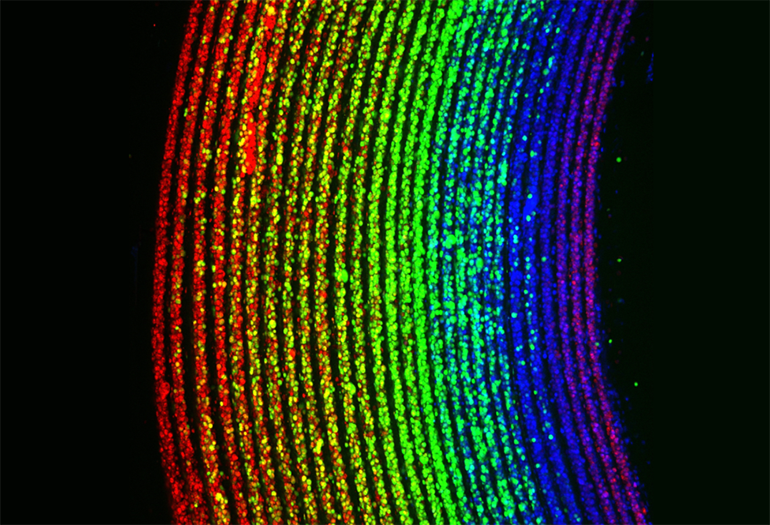Researchers at the University of Edinburgh have developed a new method to create multilayered tubes from cells. The technique could be very useful for recreating multilayered tubular constructs that are found in the body, such as the intestines and blood vessels. Accurately modeling such complex structures in the lab could open new doors in terms of medical research and may even pave the way for bioengineered intestinal or vascular constructs that are suitable for implantation in human patients.
The method is called rotational internal flow layer engineering (RIFLE), and is low-cost, rapid and can be used to create constructs on a small scale. In essence, the technique involves delivering cells in a liquid suspension to a tube that is spinning at high speed (9000 rpm). The resulting centrifugal force causes the cell suspension to spread over the internal surface of the tube, where the cells can settle and form a monolayer, with additional cell layers being added iteratively.
Our bodies are full of complex structures that are set to keep scientists busy over the following decades as they seek to recreate them in the lab. While this is a challenge, creating transplantable organs on the lab bench is a worthwhile goal, given the shortage of available transplants, and should also make medical research easier and avoid the need to use experimental animals to find new treatments.
This is the goal of RIFLE, which aims to recreate the layered, tubular structures within our bodies, such as the intestine or blood vessels. The technology uses a spinning tube to distribute a cell suspension all over its internal surface, creating a cell layer that is just one cell thick. Then, a new layer can be added on top, allowing the researchers to create multilayered constructs.
“With the RIFLE technology, we can create, in the laboratory, the high-resolutions that we observe in human layered tubular tissue, such as blood vessels,” said Ian Holland, a researcher involved in the study. “Crucially, this uses the same materials and cells we find in our own bodies. This level of accuracy is essential for researchers who want to develop new medicines and investigate diseases — ultimately reducing the need for experiments involving animals.”
Study in journal Biofabrication: Stratified tissue biofabrication by rotational internal flow layer engineering

